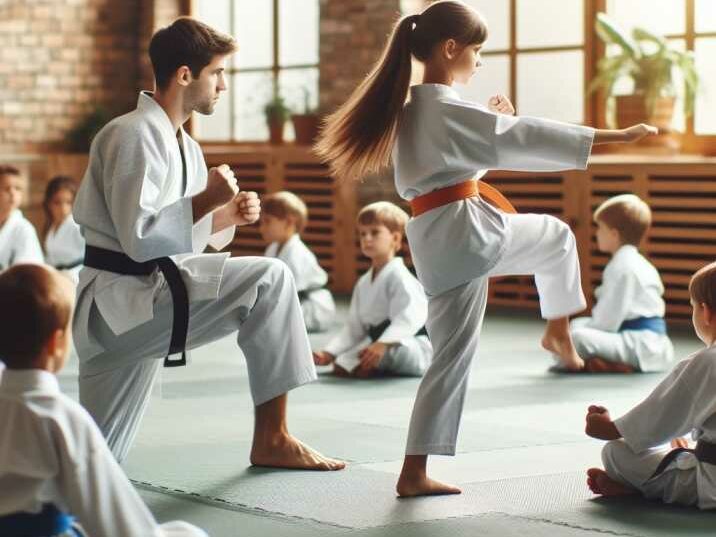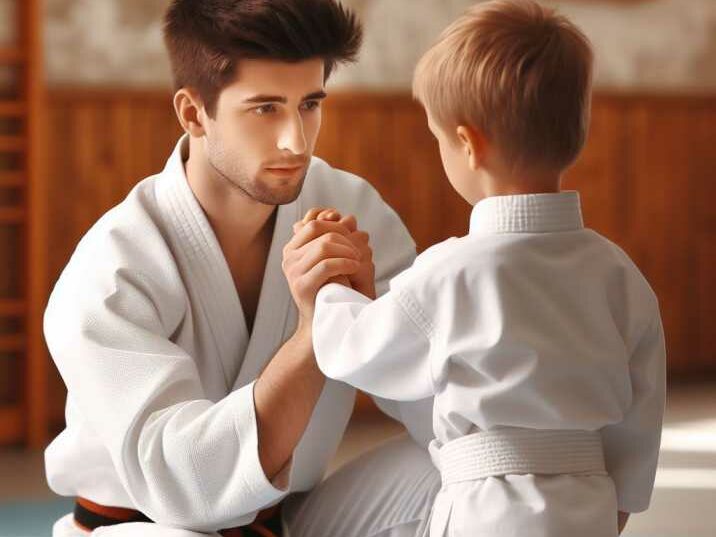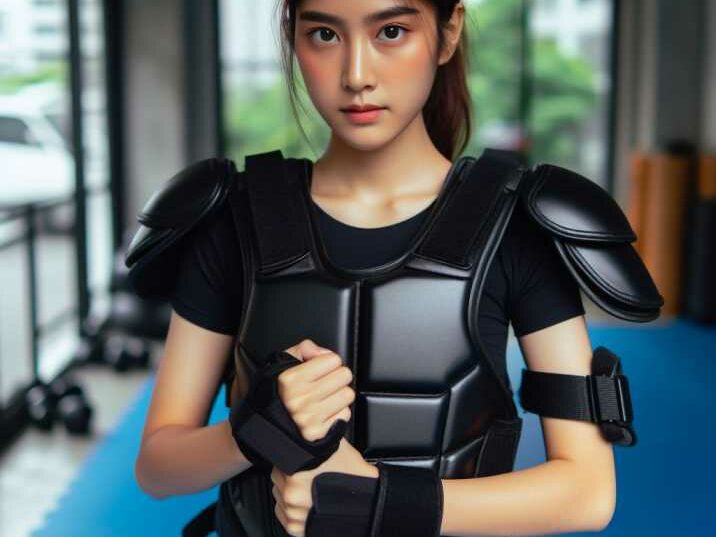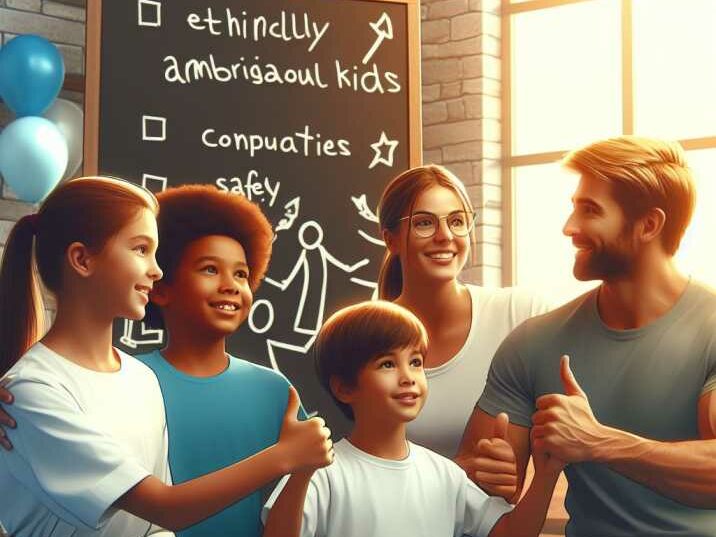Introduction:
Table of Contents
In the world of children’s martial arts, prioritizing safety is paramount. This article delves into the crucial safety measures that parents, instructors, and practitioners need to uphold. By fostering a secure and empowering environment, kids can reap the numerous benefits of martial arts without compromising their well-being.

Safety Measures in Kids Martial Arts: Building Confidence and Security
Ensuring safety in kids’ martial arts involves a comprehensive approach that covers training, supervision, equipment, and more. This article explores each aspect in detail, providing valuable insights for parents and instructors to create a positive and secure martial arts experience for children.
The Foundation: Proper Training and Instruction
Beginning with the fundamentals, proper training and instruction form the bedrock of safety in kids’ martial arts. Instructors play a pivotal role in shaping young minds, emphasizing the importance of discipline, respect, and controlled movements.

Warm-up and Stretching: Preparing Young Bodies
One essential safety measure is the incorporation of proper warm-up and stretching routines. Before engaging in any martial arts activities, children should undergo warm-up exercises to prepare their bodies physically and reduce the risk of injuries.
The Role of Protective Gear: Shielding Young Warriors
Protective gear is a vital component in ensuring the safety measures in kids martial arts. From padded gloves to helmets, the right equipment acts as a shield, minimizing the impact of physical contact and promoting a secure training environment.

Teaching Respect: Nurturing Positive Training Dynamics
Beyond physical safety, instilling values such as respect is equally crucial. Teaching kids to respect their training partners fosters a positive and cooperative training atmosphere, reducing the likelihood of accidents and injuries.
Supervision Matters: The Watchful Eye of Instructors
Underlining the significance of supervision, instructors must maintain a watchful eye during classes. Close monitoring ensures that children execute techniques correctly, preventing injuries and fostering a supportive learning environment.
Equipping for Safety: The Role of Protective Gear
Safety doesn’t solely rely on training and supervision; proper equipment is equally crucial. From padded gloves to helmets, the right protective gear minimizes the risk of injuries, allowing children to train with confidence.

Beyond the Dojo: Safety at Home and School
Safety extends beyond the dojo, encompassing home and school environments. This section explores how parents and educators can collaborate to reinforce martial arts principles and ensure a safe atmosphere for children both inside and outside the training facility.
Mental Safety: Fostering Emotional Well-being
While physical safety is paramount, mental well-being is equally crucial. This section emphasizes the role of positive reinforcement, encouragement, and open communication in nurturing a child’s emotional health throughout their martial arts journey.
Community Involvement: Creating a Supportive Network
Building a strong community around kids’ martial arts contributes to safety. This section discusses the importance of fostering a supportive network of parents, instructors, and fellow practitioners to enhance the overall safety measures in kids martial arts and enjoyment of the experience.

Responding to Challenges: Injury Prevention and First Aid
Despite precautions, challenges may arise. This section addresses injury prevention strategies and the importance of instructors and parents being well-versed in basic first aid, ensuring swift and effective responses to unforeseen circumstances.
Staying Informed: Evolving Safety Standards
In the dynamic world of martial arts, safety standards evolve. This section explores how staying informed about the latest safety guidelines and updates ensures that children’s martial arts programs remain current and effective.
Empowering Kids Through Safe Martial Arts Practices
Conclusion:
In conclusion, implementing safety measures in kids’ martial arts is a collective effort involving instructors, parents, and the broader community. By prioritizing proper training, supervision, and equipment, we create an environment where young practitioners can thrive, building not only physical strength but also confidence and resilience.
FAQs:
- Q: How can I ensure my child’s safety during martial arts classes?
- A: Implementing proper training, supervision, and ensuring the use of protective gear are key measures to guarantee your child’s safety.
- Q: What role do instructors play in ensuring safety?
- A: Instructors are crucial for maintaining a secure environment by providing proper guidance, supervision, and instilling discipline in young practitioners.
- Q: Is martial arts safe for kids at home?
- A: Yes, with proper supervision and adherence to safety guidelines, kids can practice martial arts safely at home.
- Q: What protective gear is essential for kids in martial arts?
- A: Essential protective gear includes padded gloves, helmets, mouthguards, and appropriate footwear to minimize the risk of injuries.
- Q: How can parents contribute to the safety of kids in martial arts?
- A: Parents can contribute by reinforcing martial arts principles at home, staying informed about safety guidelines, and actively participating in the martial arts community.
- Q: Are there mental health benefits to practicing martial arts?
- A: Absolutely, martial arts fosters emotional well-being by promoting self-discipline, confidence, and resilience in young practitioners.
- Q: How can the community support safety in kids’ martial arts?
- A: Building a supportive network of parents, instructors, and fellow practitioners contributes to a safer and more enriching martial arts experience for children.
- Q: What should I do in case of an injury during martial arts practice?
- A: Being familiar with basic first aid and having instructors trained in emergency response ensures a swift and effective response to injuries.
- Q: Are there evolving safety standards in kids’ martial arts?
- A: Yes, staying informed about the latest safety guidelines and updates is essential to ensure the ongoing effectiveness of children’s martial arts programs.
- Q: How can I encourage my child’s emotional well-being in martial arts?
- A: Positive reinforcement, open communication, and creating a supportive environment contribute to the emotional well-being of young martial artists.
- Q: Can children benefit from martial arts outside the training facility?
- A: Yes, extending martial arts principles to home and school environments helps reinforce positive habits and ensures a holistic approach to safety.
- Q: What should I look for in a martial arts program for my child?
- A: Look for programs that prioritize safety, have qualified instructors, and promote a positive and inclusive learning environment for children.


